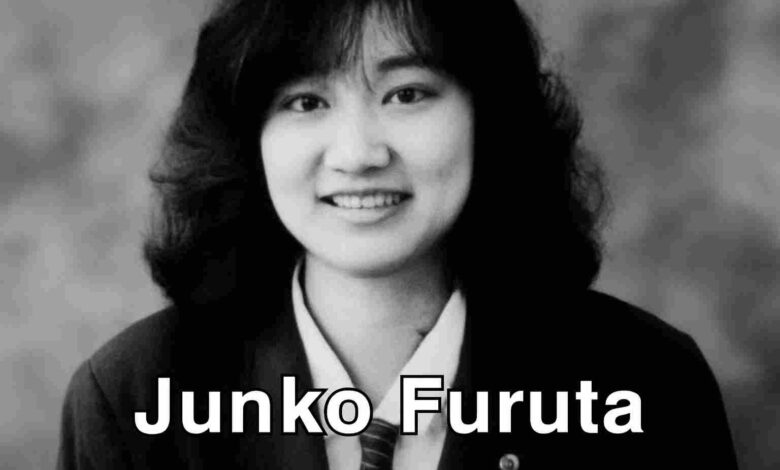Junko Furuta: The Heartbreaking True Story That Shook Japan
A Deep Look Into the Murder of Junko Furuta and Its Lasting Impact

Table of Contents
ToggleIntroduction
The name Junko Furuta remains etched in history as one of the most tragic cases of cruelty and injustice. The murder of Junko Furuta is often described as one of the most shocking crimes in modern Japan. Her story is not just about a young girl’s life being stolen but also a reflection of society’s failures to protect its most vulnerable members.
Junko was a bright, ambitious, and kind-hearted 17-year-old high school student whose future was full of promise. Her life was brutally cut short in late 1988, leaving a nation horrified and sparking a wave of public outrage that would influence legal discussions for years to come. This article explores her early life, the horrific crime, the investigation, the trials, and the legacy she left behind.
Quick Bio of Junko Furuta
| Detail | Information |
|---|---|
| Full Name | Junko Furuta (古田 順子) |
| Date of Birth | January 18, 1971 |
| Birthplace | Misato, Saitama Prefecture, Japan |
| Nationality | Japanese |
| Education | Yashio-Minami High School student |
| Occupation | High school student, part-time factory worker |
| Date of Death | January 4, 1989 |
| Age at Death | 17 years |
| Family | Parents, older brother, younger brother |
| Marital Status | Unmarried |
| Children | None |
Early Life of Junko Furuta
Childhood and Family
Junko Furuta was born on January 18, 1971, in Misato, Saitama Prefecture, Japan. She grew up in a loving household with her parents and two brothers. Known for her gentle and kind nature, Junko had a warm relationship with her family and was deeply admired by her peers and teachers.
From an early age, she demonstrated intelligence and ambition. Junko was focused on her studies and had dreams of building a successful future. Her dedication to education made her one of the top students at her high school.
School and Work Life
Junko attended Yashio-Minami High School, where she was considered a model student. She was rarely absent and excelled academically. In addition to her studies, she worked part-time at a local plastic molding factory, saving money for her graduation trip and future plans. This balance between school and work reflected her maturity and sense of responsibility.
The Abduction and the Start of a Tragic Ordeal
The Fateful Night
On November 25, 1988, Junko’s life took a devastating turn. While returning home from her part-time job, she was targeted by a group of four teenage boys led by Hiroshi Miyano. They tricked her into coming with them, then forcibly abducted her and took her to a house in Adachi, Tokyo.
This event marked the beginning of a 40-day period of unimaginable suffering. The murder of Junko Furuta would later become infamous for the extreme cruelty she endured during her captivity.
Held Captive
Junko was held captive in the home of one of the perpetrators, Shinji Minato. During this time, she suffered severe torture and abuse. Despite attempts to escape, she was constantly overpowered. Neighbors and even some family members of the perpetrators suspected something was wrong but failed to take action. This lack of intervention added to the tragedy and highlighted flaws in societal responsibility.
The Brutal End
On January 4, 1989, after weeks of relentless torture, Junko died from traumatic shock caused by her injuries. The perpetrators attempted to cover up their crime by placing her body in a 55-gallon metal drum filled with wet concrete, which they later abandoned at a construction site in Tokyo.
Her remains were discovered on March 29, 1989, after a police investigation. The shocking details of her suffering horrified the public and sparked widespread anger.
Investigation and Trials
Arrest and Identification
The police investigation quickly identified the main suspects. Initially, their names were withheld due to Japanese juvenile law, which protects minors’ identities. However, because of the extreme brutality of the crime, a magazine revealed their real names to the public.
Junko’s body was identified through fingerprint analysis, confirming the devastating truth for her family and friends.
Sentencing
The four main perpetrators were tried in juvenile court and received sentences that many considered too lenient given the severity of the crime.
-
Hiroshi Miyano received the maximum sentence for a juvenile: 20 years in prison.
-
Jō Ogura received 5–10 years in juvenile detention.
-
Shinji Minato received 5–9 years.
-
Yasushi Watanabe received 5–7 years.
The public strongly criticized these sentences, leading to heated debates about reforming juvenile justice laws in Japan.
Legacy of Junko Furuta
National Impact
The murder of Junko Furuta deeply impacted Japan. It prompted conversations about the protection of minors, police response to missing person cases, and the responsibilities of communities to act when they suspect abuse.
Junko’s case became a symbol of the need for change. Many advocacy groups pushed for stricter laws and better support systems for victims of crime.
Cultural Influence
The tragic story has inspired documentaries, books, and films, including the movie Concrete (2004). While these works aim to shed light on the crime, they are often controversial due to the sensitive nature of the case.
Conclusion
Junko Furuta’s story is a heartbreaking reminder of the consequences of unchecked violence and societal indifference. Though she was just 17, her life and death continue to influence discussions on justice and victim protection in Japan. The murder of Junko Furuta is more than just a crime story; it is a call to action to prevent such tragedies from happening again.
Her legacy lives on as a symbol of the fight for justice and the protection of the innocent. Remembering Junko is essential to ensuring her suffering was not in vain and that society learns from its past failures.
FAQs
Who was Junko Furuta?
Junko Furuta was a 17-year-old high school student from Saitama, Japan, whose life was tragically cut short after she was kidnapped, tortured, and murdered in late 1988.
When did the murder of Junko Furuta take place?
She was abducted on November 25, 1988, and died on January 4, 1989. Her body was discovered on March 29, 1989.
Why is this case so infamous in Japan?
The extreme cruelty and length of Junko’s suffering shocked the nation. The lenient sentences given to the perpetrators added to public outrage and calls for reform in juvenile justice laws.
What was Junko Furuta like as a person?
Junko was described as polite, hardworking, and ambitious. She excelled academically and was deeply loved by her family and friends.
What changes came about after this case?
The case prompted debates about juvenile laws, police procedures, and community responsibility. It also increased awareness about the need for stronger victim protection systems in Japan.



